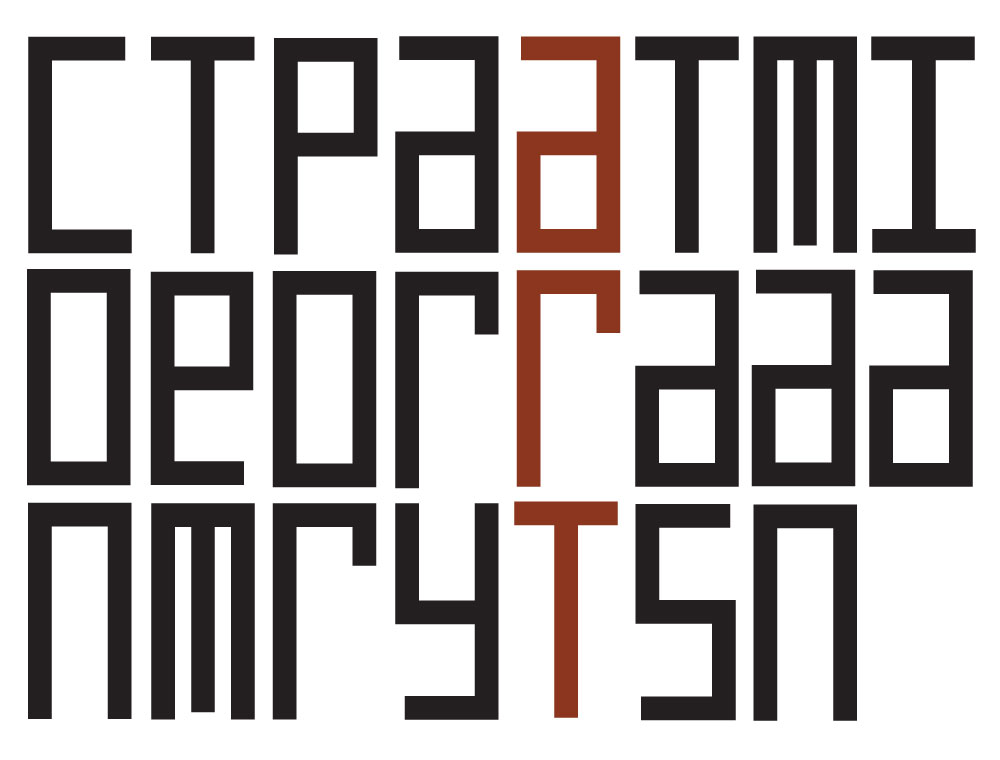#6: Beyond the Field (still)
Mila Faranov on Beyond the Field (still)
Samara Adamson-Pincweski, Eun Ju Cho, Michael Graeve, Neil Haddon, Sarah Hughes, Benjamin Kluss, Jacob Leary, Suzanne Moss, Frank Murri, Joshua Reilly, Ron Robertson-Swann, Paul Snell, Wilma Tabacco, Tricky Walsh, Stephen Wickham, Carolyn Wigston And Paul Zika
Curated by Anne Mestitz
The first thought is about the space. Up the stairs and in. A rustic, exposed beam warehouse full of banged up edges, layers of paint and its own history. The space has been colonised by the art, by the artists, by the curator, by the people. The space has a place. The space is a place in which the work resides. Or is, more accurately, on show. It is a vehicle for the work. The space didn’t drive the work, it’s just housing it temporarily. Anyway, it’s not a motor home. The space is a constructed geography upon which the work has been populated.
The work being the art:
the canvas,
or the board,
or the paper,
is a place to be populated by layers of paint, of acrylic, of board, of shapes, of line. Fields upon which to create form, to create experience, to create… a space, indeed, to meditate, to contemplate. Space. It’s unavoidable. (Still) I contemplate the space. We’re beyond the field and in a room. It’s a warm room with warm people discussing the work, or their days, meandering to and from a composition hanging on a wall, forgetting the wall and seeing a new place, a new space.
The work. The work is accurate. Accurate in its structure. Accurate in its composition. Accurate in its lines, geometry, colour and form. The work is not just the sum of its parts. That’s a reliable saying. The work is reliable. But is it? It is not a simulation. Not an illusion, except a spatial illusion. Uh oh. The work is not attempting to imitate. It’s not trying to be anything. But it certainly isn’t nothing. We can look for meaning. For points of departure. Perhaps an allusion. There are references. Drawn by the artist, drawn by the people in the space as they seek their own responses. Do we constantly search for meaning, or can it just be? Ambiguity? No. Yes! The work is the word. It is what it is. But it is also more. It is what it does to me. It is what it does to you. Assuming we let it do something to us. Do we give it the time of day? And then it is what it is without you, without me, without the exhibition? Do I pick a favourite? Would I like to know the history? Why are there no didactic panels on the walls? Anyway, I don’t like them. Except when I do. When I’m stuck and need help or am looking for some nostalgia. A door, latch, a nipple, something to hold onto to, something to feed me, something to guide me. Help me. Give me an insight. Where the artist lived or why they did it. Its not a murder? It’s not a crime? Unless you have a position. Then it could be. It’s criminal! What were they thinking! I’m not trying to cross examine the witness so why do I need a deposition anyway? They call that hearsay, don’t they? They tell you it’s tale. I mean the art. The history of the art. Most history is a rumour perpetuated by a person who wasn’t there.
A series of possibilities or a series of obscurities? It seems the response is to question. Or… It seems the question is to question? How does it make YOU feel? How does IT make you feel? HOW does it make you feel? Should it make you feel? I like the colours. This one would go well in the lounge room. Is that ok? Can I think of the work that way? Do I feel uncomfortable when the intention isn’t clear? I do on a date. What’s the agenda? Does it have one? Do you have one?
Back to the space. Creating space, curating space? Do we need a ladder? Or a light? Is the space the place? Do we need a story? Do we look for a story? Is the navigation of the work within the space? Is the narrative embedded in the process of making the work? Is it a composition or a recording of a process? Does the artist make the decision? Does the work speak for itself? Regulation, sublimation, precision, happenstance. Is there a hierarchy of creation? Is it a matter of taste? Do the colours go together? Is it disrupting the plane. Can I have an explanation? Please?
I did find comfort in conversation with a creator of a series of paintings. A painter who pretty much said he didn’t really paint. Just created paintings.
Beyond the Field (still) exhibited at Contemporary Art Tasmania 22 September – 4 November 2018 and was presented in partnership with Moonah Arts Centre.
Mila Faranov is a creative person based in Melbourne, Australia. She manifests her creativity within the realms of the visual and performing arts and has recently taken to object and furniture design. She identifies under the broad definition of artist, and is known as an infamous raconteur among her peers. She was a founding contributor to the online art journal Stamm.
JOURNAL is edited by CAT Engagement Co-ordinator, Lisa Campbell-Smith.
The project commissions writers to create new text-based works that engage with the CAT exhibition program. The platform provides an opportunity for writers to develop work outside the structures of critique and criticism prevalent in art writing.
